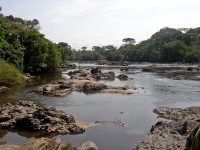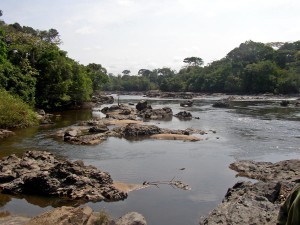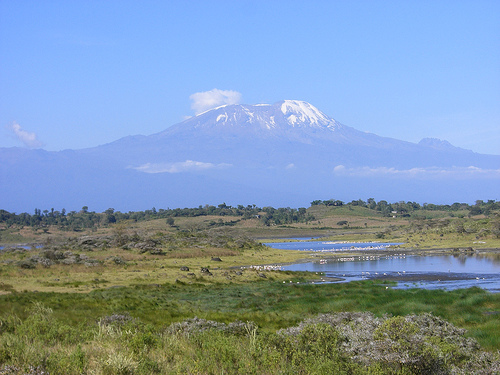
Watch the spectacular wildlife at Okapi Wildlife Reserve.
- Okapi Wildlife Reserve is a protected area in Africa’s Democratic Republic of Congo, in the Ituri Rainforest.
- ‘Okapi Wildlife Reserve’ is named after its primary protected animal, the okapi, with roughly 5000 located in the park, a sixth of the estimated total population.
- Okapi Wildlife Reserve covers an area of 13,726 square kilometres (5,300 square miles).
- Over 100 species of mammal are found in the Okapi Wildlife Reserve, including, but not limited to, leopards, antelope, elephants, crocodiles, okapis, primates, buffalo; as well as more than 370 bird species.
- The UNESCO World Heritage Convention declared Okapi Wildlife Reserve a World Heritage Site in 1996.
Part of Okapi Wildlife Reserve
Image courtesy of Wikimedia Commons
- Okapi Wildlife Reserve is the home to three rivers, the Epulu, Ituri and Nepoko Rivers; Mbiya Mountain; as well as numerous deposits of various rocks and minerals including gneiss, mica and granite.
- The Okapi Conservation Project supports and partners with the Okapi Wildlife Reserve, and helped to establish the reserve in 1992.
- Okapi Wildlife Reserve is the home of the Epulu Conservation and Research Center, established in 1928, where the Okapi Conservation Project does its work; and the function of the centre is to manage the okapi breeding program, conservation and research, and occasionally send small quantities of okapi to zoos.
- Approximately 80% of the Okapi Wildlife Reserve can be used for hunting by the thousands of native people living there, for the purpose of providing food to the local communities and villages, as long as traditional techniques are used; but despite this, poaching, deforestation, gold mining and political instability all continue to endanger the reserve.
- The Epulu Conservation and Research Center and the Okapi Conservation Project in the Okapi Wildlife Reserve suffered a major setback in 2012, when it was directly attacked by a group of rebels and poachers, which resulted in blazed buildings, a number of human fatalities, and death of all fourteen okapi in the breeding program.
Bibliography:
Okapi Wildlife Reserve, 2014, Wikipedia, http://en.wikipedia.org/wiki/Okapi_Wildlife_Reserve
Okapi Wildlife Reserve, 2015, UNESCO World Heritage Convention, http://whc.unesco.org/en/list/718
Okapi Faunal Reserve, Democratic Republic of Congo, n.d, The Encyclopaedia of Earth, http://www.eoearth.org/view/article/155015/










